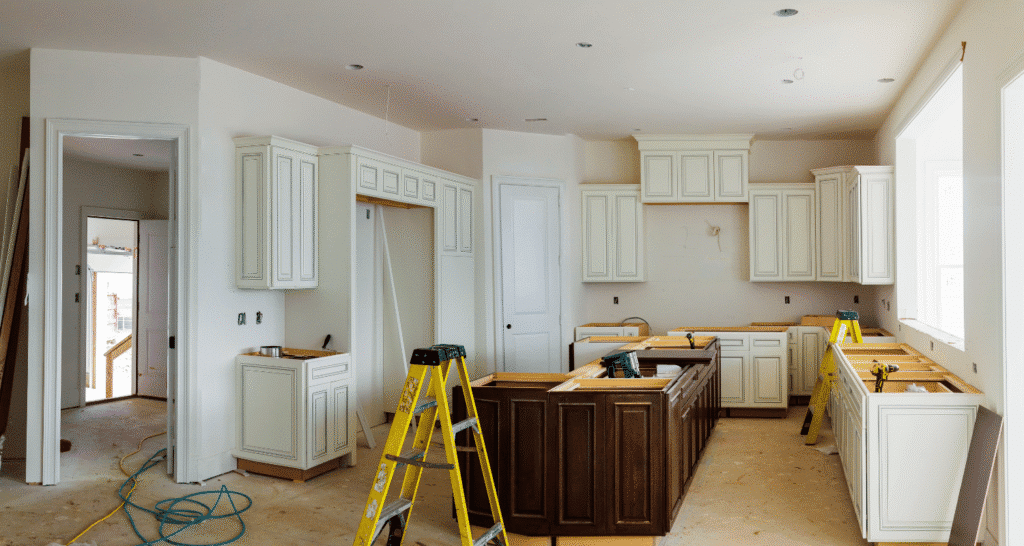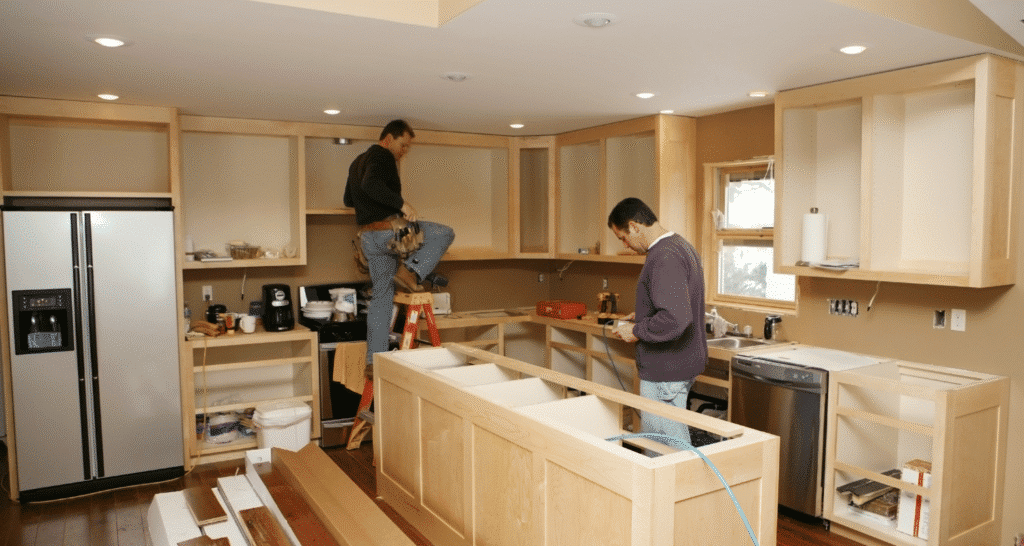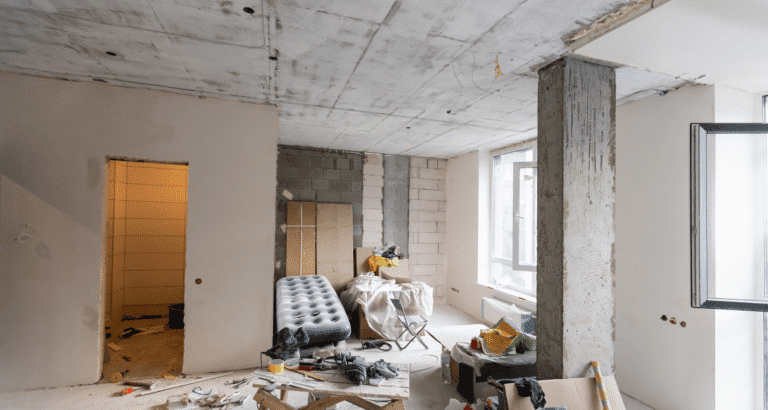For a successful restaurant or food service business, the core of your operation is typically the kitchen. Restaurant kitchen remodeling is an essential investment that improves efficiency, safety, and overall productivity. You can upgrade your worn-out kitchen, streamline workflow, or replace appliances with more efficient models. No matter the goal, skilled professional contractors will make sure that, besides covering all operational requirements, your kitchen is also visually appealing.
At Builders Group Construction, we help businesses achieve their dream kitchen by providing customized and professional advice tailored to their needs.
In this article, we will explore the value of commercial kitchen remodeling, the key factors contractors consider for a successful renovation, the essential considerations for a renovation contractor, contemporary trends in furniture designs, and the benefits of collaborating with a professional.
Why Commercial Kitchen Remodeling Matters
A commercial kitchen is not just a workspace; it is the lifeline of your food service business. Even a well-built kitchen can become outdated, inefficient, or noncompliant with evolving health and safety codes. Remodeling helps businesses redesign kitchens to maximize operations and meet regulations.
Some challenges that can be overcome through remodeling a commercial kitchen are improving workflow, adding separate prep areas, upgrading ventilation, and enhancing sanitation. In addition to that, modern designs create a safer, more staff-friendly space, which boosts overall productivity.
Key Services Offered in Commercial Kitchen Remodeling
There are professional certified kitchen builders and remodeling contractors who will provide a complete palette of services that cater to the demands of the restaurants, cafes, and other commercial food premises. Such services can be found to include:
- Restaurant Kitchen Renovation: Complete upgrade of layout, equipment, and design that enhances the efficiency of the workflow and the service delivery.
- Industrial Kitchen Renovation: Refurbishment of large-scale catering and food preparation in hotels and large-scale catering services.
- Cabinet Refacing and Storage Solutions: Refinishing cabinets, shelves, and storage compartments to optimize available space.
- Energy-Efficient Kitchen Upgrades: Energy-use items like reduced operating HVAC, LED lighting, and new appliances will be installed to lower operating costs.
- Custom Layout and Workflow Optimization: The plan of kitchens that facilitate the movement of the staff as well as prep and cooking stations.
Through the services, companies have been able to realize kitchens that are not only beautiful but also effective, safe, and future-proof.

Modern Commercial Kitchen Design Trends
Remodeling of commercial kitchens is key to keeping your kitchen aligned with today’s design standards. The contemporary designs are committed to combining efficiency, durability, and beauty. The concepts that trend are:
- Open Kitchen Formats: Enhancing communication with staff members and allowing customers to observe the platforms in restaurant environments.
- Stainless Steel Surfaces: This durable, easy-to-clean surface is bacteria-free, making it ideal for high-traffic areas.
- Power Capture Micro-Appliances: Saving utility expenses and promoting sustainable practices.
- Ergonomic Workstations: Optimized counter heights, well-placed shelving, and accessible equipment reduce staff strain.
- Integrated Technology: Smart cooking appliances, automated ventilation, and monitoring systems help to increase productivity and safety.
The Remodeling Process: What to Expect
The remodeling of a commercial kitchen as a successful project requires smart planning and collaboration between business owners and contractors. Here’s a typical process:
- Assessment and Consultation: Certified contractors inspect the existing kitchen structure, equipment, and working pattern to identify areas for improvement.
- Designing and Planning: Based on the insights of the assessment, designers develop working layouts that find the most optimal use of space, efficiency, and health code. This phase can involve reviewing layouts before and after changes to assess improvements.
- Selection of Materials and Equipment: Choose reliable materials, cabinets, flooring, and energy-saving appliances that address the operational requirements and design objectives.
- Construction and Installation: Skilled kitchen remodeling companies handle demolition, installation, and the finishing process, while minimizing disruption to business operations.
- Final Inspection and Training: Once the building is complete, the contractors will ensure that all systems meet the regulatory requirements in terms of functionality, safety, and compliance. Employees can be trained on new equipment and its optimizations.
A well-planned process helps ensure projects are delivered on time, within budget, and with minimal downtime.
Benefits of Commercial Kitchen Remodeling
Professional remodeling of the kitchen area offers numerous benefits to foodservice companies, including enhanced workflow, safety, energy efficiency, and aesthetics.. A well-designed kitchen enhances staff productivity, reduces costs, and improves overall appearance.
- Increased Productivity: Workflow and productivity will be increased due to efficient layouts that minimize unwanted steps.
- Enhanced Safety: Owing to careful ventilation, refurbished equipment, and ergonomic designs, accidents and staff exhaustion are low.
- Cost Savings: energy-efficient appliances and lighting reduce utility bills, and durable materials lower maintenance costs.
- Aesthetics: Contemporary finishes, cabinetry, and design develop a working atmosphere that impresses clients, employees, and inspectors.
- Regulatory Compliance: Updated kitchens fulfill local health, safety, and building codes that minimize the risk of non-compliance.
Remodeling is not only an investment in appearance, but it is also a business move you can take to secure long-term business success.
Cabinet Refacing and Storage Upgrades
Cabinet refacing is one of the most cost-effective ways to remodel a commercial kitchen without necessarily rebuilding it completely. The method revamps the appearance of the cabinets while retaining existing structures, which saves both time and money. In combination with the work of refacing, these remodeling projects may include new shelving, pantry systems, and storage solutions tailored to specific business needs. Effective storage contributes to the flow of work, minimizes clutter, and provides employees with access to important ingredients and tools at any given moment.
Energy-Efficient Kitchen Upgrades
Commercial kitchen design is increasingly focused on sustainability. Green kitchen conversions, such as LED lamps, high-efficiency dishwashers, and refrigerators, as well as water-saving plumbing, are considered energy-efficient. The aspects of these improvements not only reduce the cost of running the operation but also promote environmentally friendly business operations. Smart monitoring systems track energy use and optimize appliance performance.
Restaurant and Industrial Kitchen Renovation
Commercial kitchens vary widely in size and purpose, such as a simple small restaurant kitchen or a big operation in a hotel or a catering center. Restaurant renovations often improve the dining experience by speeding up preparation and ensuring consistency. Conversely, industrial kitchen renovation focuses on capacity, durability, and optimized workflow to facilitate large-scale production. The efficiency of certified contractors in both instances has been used to establish that the kitchen is up to par regarding functionality as well as safety.
Before and After Kitchen Renovations
Before-and-after visuals are an important part of remodeling. Before-and-after kitchen renovations are beneficial to business owners as they allow them to envision the possible changes and make informed choices in terms of layouts, finishes, and equipment. It may be a cabinet reface or a total remodel of an entire industrial kitchen. These comparisons help guide design decisions and confirm results.
Why Hire Professional Kitchen Remodel Contractors
It is essential to hire professional kitchen remodel contractors and kitchen renovation specialists to ensure a successful project. An experienced contractor is well-versed in building codes, construction optimization, and industry best practices. They also handle deadlines, organize subcontractors, and obtain quality materials to ensure the kitchen is both functional and visually appealing. As it is not a simple task, the laws concerning the building and the safety measures would require more compliance.
The certified contractors aid in including modern kitchen designs that commercial clients are seeking, such as energy-saving appliances and ergonomic workstations, to ensure the kitchen is both functional and visually appealing.
Conclusion
Commercial kitchen remodeling is not only a matter of upgrading the area but also enhancing efficiency, safety, and appearance in an attempt to build long-term business success. Through the renovation of the restaurant’s kitchen and the upgrading of the industry, certified professionals will ensure a professional, compliant, and efficient transformation.
At Builders Group Construction, we develop customized solutions for businesses of all sizes, ranging from cabinet refacing with energy-saving improvements and other products to full kitchen facility renovations within the industry. By incorporating contemporary styles, utilizing strong materials, and employing up-to-date techniques that reflect current fashion trends in commercial kitchens, you can create a functional and efficient kitchen that also serves as a beautiful feature of your operation.
FAQs
How much does an average commercial kitchen cost?
Given that a commercial kitchen remodel’s cost largely depends on its size, equipment, and design, the average cost of a full renovation ranges between $50,000 and $150,000.
Is $10,000 enough for a kitchen remodel?
A $10,000 budget may cover small upgrades such as cabinet refacing, new countertops, or minor appliance replacements. However, it is not enough for a full commercial kitchen remodel.
What is the most expensive part of a commercial kitchen?
The most expensive parts are typically large equipment, such as ovens, refrigeration, and ventilation systems, followed by custom or specialized machinery.
How long does it take to renovate a commercial kitchen?
The renovation schedules are dependent upon the scope of the project; however, most mid-size commercial renovation projects may take 6 to 12 weeks, though a full industrial renovation may take 3 to 6 months.








